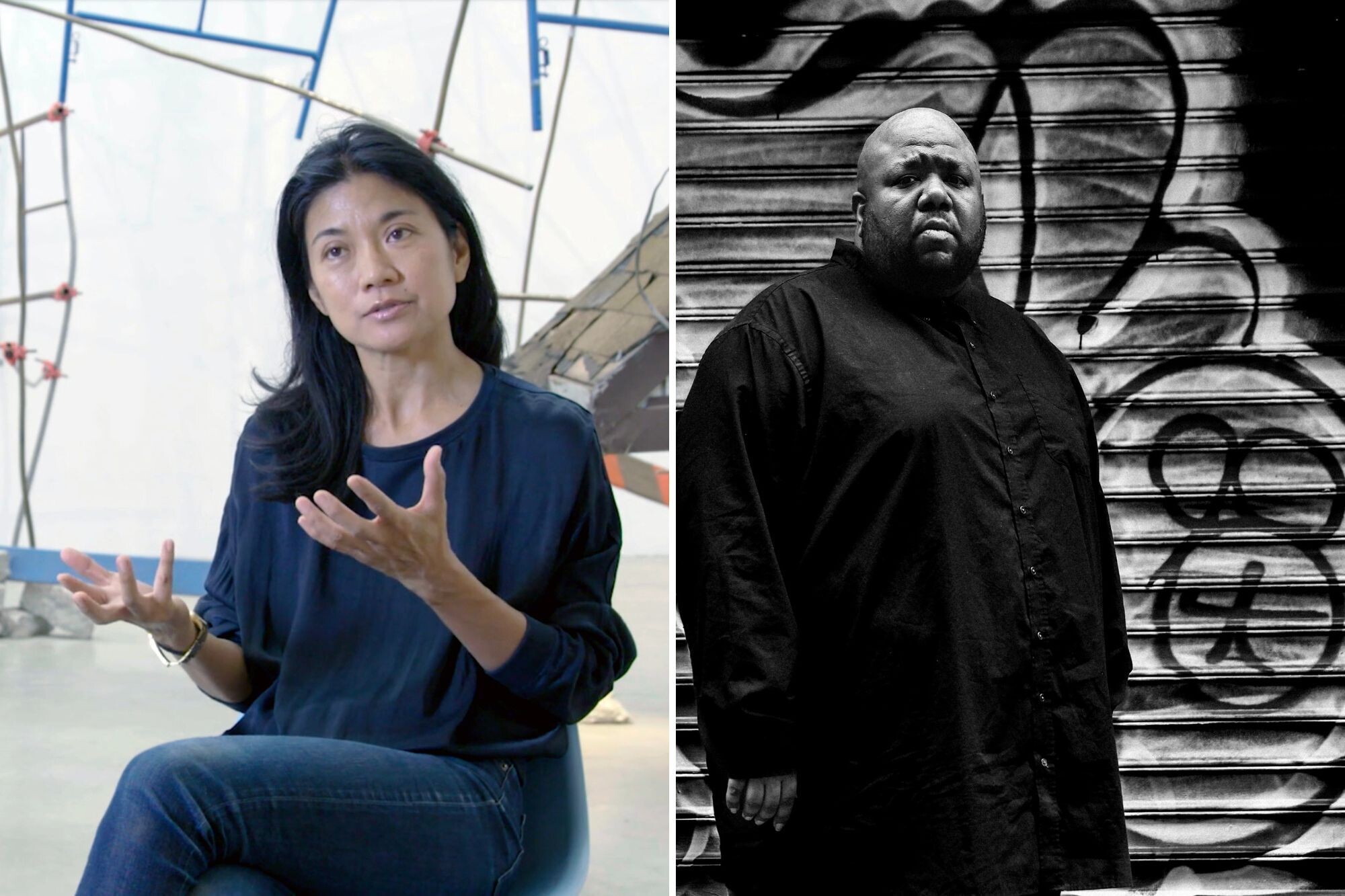
(From left) Doctoral student Hannah Yamagata, research assistant professor Kushol Gupta, and postdoctoral fellow Marshall Padilla holding 3D-printed models of nanoparticles.
(Image: Bella Ciervo)

Two University of Pennsylvania faculty have each been awarded one of 12 Pew Fellowships in the Arts by the Pew Center for Arts & Heritage in Philadelphia. In addition, two Penn faculty are each involved with a project that received creative project grants.
Pew announced $10.2 million awarded this year through 39 grants to Philadelphia-area cultural institutions and artists.
Installation artist and sculptor Michelle Lopez in the Weitzman School of Design, and composer and musician Tyshawn Sorey in the School of Arts & Sciences (SAS) were each awarded a 2024 Pew Fellowship in the Arts. SAS's Gwendolyn DuBois Shaw, history of art professor, and Gwyn Roberts, director of Penn’s Early Music Ensembles, are involved in projects which were awarded creative project grants.
The Pew Fellowship in the Arts program supports regional artistic talent through 12 annual grants. Each artist receives $85,000 in unrestricted funds, as well as professional-advancement resources such as financial counseling, workshops, and opportunities to participate in artist residency programs.
Lopez, associate professor of fine arts, creates immersive, large-scale installations from industrial materials and debris like glass, wood, steel rope, and street rubble. Influenced by her own cultural experiences, her research-driven work explores cultural phenomena and draws from the aesthetic languages and histories of industrialization, art movements and from the built environment. A 2019 exhibition at Penn’s Institute of Contemporary Art featured the installation “Ballast & Barricades.” Lopez says, “As a maker, I believe the manipulation of objects and space is a wondrous alchemy, one that can transform perception.”
Sorey is a Presidential Assistant Professor of Music at Penn. His compositions, performances, and recordings range from solo percussion and jazz ensembles to pieces for chamber music and opera settings. He describes his style as a “world aesthetic,” bridging a multitude of cultural and musical traditions found in contemporary classical music, Black American music, and African and European forms of improvised music. His honors include a 2024 Pulitzer Prize for Music and a 2017 MacArthur Fellowship. Funded by a 2020 Pew Arts & Heritage project grant, Sorey was the composer in a three-year collaboration with Brooke O’Harra of SAS that resulted in the 2023 premier performance of “Be Holding” at Girard College in Philadelphia. Sorey says: “My work concerns itself with developing a creative model that altogether obliterates musical boundaries, expands consciousness by going inward, and facilitates emotional transcendence.”
Pew’s Creative Project grants to cultural institutions will fund 18 projects to engage communities and audiences across the region through newly commissioned theater, dance, and music performances; public art installations; and contemporary visual art and historical exhibitions.
Shaw is the Class of 1940 Bicentennial Term Professor in history of art and the inaugural faculty director of Penn’s Arthur Ross Gallery. The Pew project grant of $360,000 will fund the Mural Arts Philadelphia project “Vamonos pa’l monte (Let’s go to the mountains),” a processional journey created by interdisciplinary artist Wanda Raimundi-Ortiz, with Shaw as the curator.
For three decades Roberts has directed the Early Music Ensembles at Penn, working with about 25 students a semester, focusing on music from the 17th and 18th centuries. The Pew project grant of $292,440 will fund the Tempesta di Mare Philadelphia Baroque Orchestra’s project “Hidden Virtuosas: music by and for the extraordinary female musicians of baroque Venice,” through concerts and public engagement. The project, in partnership with the choir of Girard College, is informed by new scholarship and research by Roberts, who is co-founder and co-director of Tempesta di Mare.
In addition, filmmaker and photographer Tshay Williams, who graduated from Penn in 2017 with a bachelor’s degree in sociology from the College of Arts and Sciences, was awarded a Pew Fellowship in the Arts. Williams creates films across documentary, fiction, and hybrid forms, using both moving and still images to “imagine a world where Black people have full creative agency over their lives,” she says.
Louisa Shepard

(From left) Doctoral student Hannah Yamagata, research assistant professor Kushol Gupta, and postdoctoral fellow Marshall Padilla holding 3D-printed models of nanoparticles.
(Image: Bella Ciervo)

Jin Liu, Penn’s newest economics faculty member, specializes in international trade.
nocred

nocred

nocred